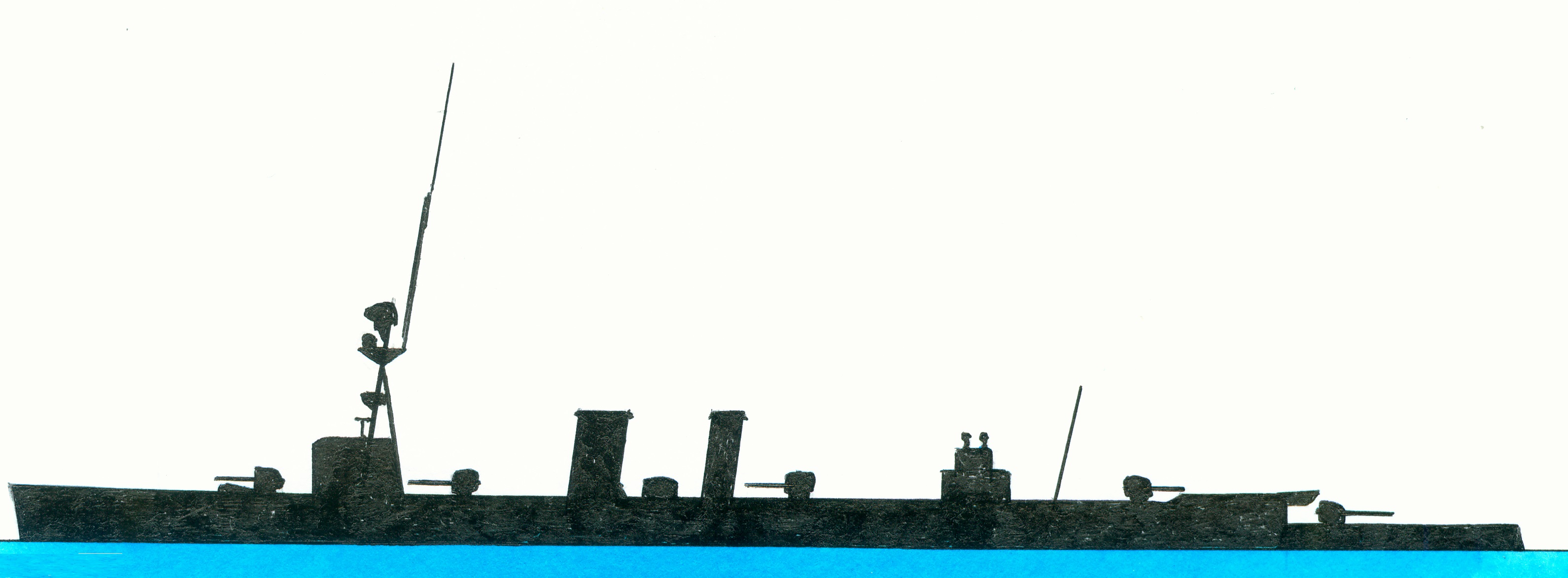Caledon-class
Danae-class
Building ordered under the War Emergency Program in July 1917, laid down by Sir. W.G. Armstrong Whitworth and Company, High Waters, England on 5 November 1917, launched on 19 November 1918, completed by the Devonport Navy Yard in October 1919, handed over to the Royal New Zealand Navy and finally torpedoed and sunk by the German submarine U-124 off Saint Paul’s Rock, north east of Recife, Brazil on 24 November 1941. Fitted out with a flying-off platform a wheeled aircraft.
Part of the Danae-class light cruisers consisting of the completed Danae, Dragon, Dauntless, Delhi, Dunedin, Durban, Despatch and Diomede and the cancelled Daedalus, Daring, Desperate and Dryad, preceded by the C-class and succeeded by the Emerald-class. An improved C-class design including lengthening of the hull to make it possible to add an extra 15,2cm/6”gun situated between the bridge and the forefunnel.
General technical class specifications
Displacement 4.927 (standard)-5.925 (full load) tons and as dimensions 135,6 (between perpendiculars)-144,0 (over all) x 14,2 x 4,4 metres. The machinery consisted of 6 Yarrow water tube boilers and 2 Parsons geared steam turbines to supply 40.000 shp and with the 2 shafts allowing a speed of 27 (full load)-29 knots. Crew numbered 462-486 men. Original class armament consisted of 6x1-15,2cm/6” L/45 Mark XII guns, 2-7,62cm/3” Mk II anti aircraft guns, 2-4cm/2pd quick firing pom-pom anti aircraft guns and 4x3-53,3cm/21” torpedo tubes. The armour consisted of a 3,8cm/1.5”-5,7cm/2.25” (forward)-7,6cm/3” (amidships)-5,1cm/2”-5,7cm/2.25” (aft) thick main belt, a 2,5cm/1” thick upper deck above the machinery, the steering gear was above protected by the 1” thick main deck and the guns by 1” thick gunshields.


